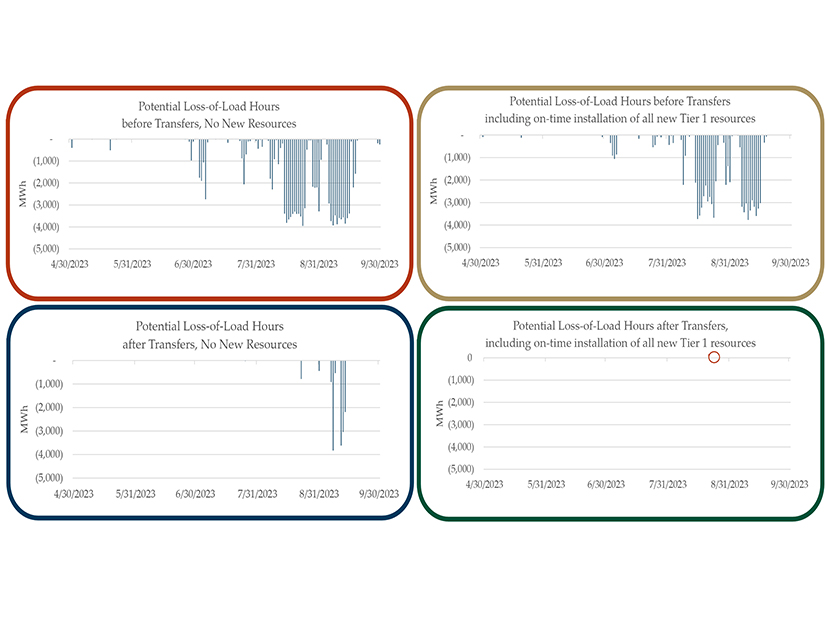
The West’s summer reliability outlook is better than it has been the past few years, but shortfalls could arise if new resources fail to materialize or imported electricity does not flow as expected, WECC analysts said last week in a technical session that preceded the organization’s Board of Directors meeting.
“Yes, we are improving,” WECC principal analyst Matthew Elkins said. “We’ve delayed retirements. We’ve expedited new resources online. Things are getting better in the near term.”
However, with supply chain holdups, fuel constraints and other problems, “I think we’re just kicking that can down the road,” Elkins said.
With more than 4,000 MW of coal-fired generating resources expected to retire by 2025, the supply chain issues need to be resolved and large amounts of new clean energy and storage resources need to be built if the West is to avoid further shortfalls, he said.
“We need to keep track of this,” Elkins said.
In its 2023 Summer Reliability Assessment, NERC said resources in the Western Interconnection are sufficient to support normal peak demand, but warned that a wide-area heat event could create problems for multiple subregions that normally rely on regional transfers to meet peak demand when solar production falls off.
The assessment also noted the risk of wildfires to the transmission network, which can limit transfer capacity and lead to localized load shedding. (See NERC Warns of Summer Reliability Risks Across North America.)
Elkins discussed those potential pitfalls and others in the technical session.
WECC analysts developed a matrix that shows hours at risk of shortfalls without new resources or imports in its four planning regions: California-Mexico, the Northwest, the Southwest and Canada.
In California-Mexico, there should be minimal loss-of-load hours if imports are not limited and all new Tier 1 resources come online this summer. Without those resources or transfers, the loss-of-load hours increase substantially, WECC’s analysis shows.
The same is true to a lesser extent in the Northwest and Southwest, WECC predicts.
Up to 13 GW of new generation and storage resources are planned to come online in the Western Interconnection by the end of this summer, but supply chain disruptions could undermine those plans, WECC says. (See Western Plan to Add 13 GW by Summer Comes with Risks.)
Most of the new resource additions will be solar, battery storage and wind, with some natural gas and biogas generation.
Last year, new solar installations in the West fell nearly 3 GW short of expectations because of tariffs on solar panels from Southeast Asia and supply chain constraints.
Many battery components still come from China, which has experienced COVID-related supply chain disruptions, as well as increasing tensions with the U.S. that could affect trade.
Planned battery installations last year fell short in WECC’s Northwest and Southwest regions, but not in California-Mexico, where the new batteries added to the grid exceeded expectations.
Through the end of 2023, more than 25,000 MW of new resources are planned to be installed. Elkins called the figure “historical.”
“We’ve never been over 10,000 MW,” Elkins said. “We’ve never built that much. This is two and a half times what we’ve actually built in the past.”
Whether most of those planned resources get built remains to be seen.

